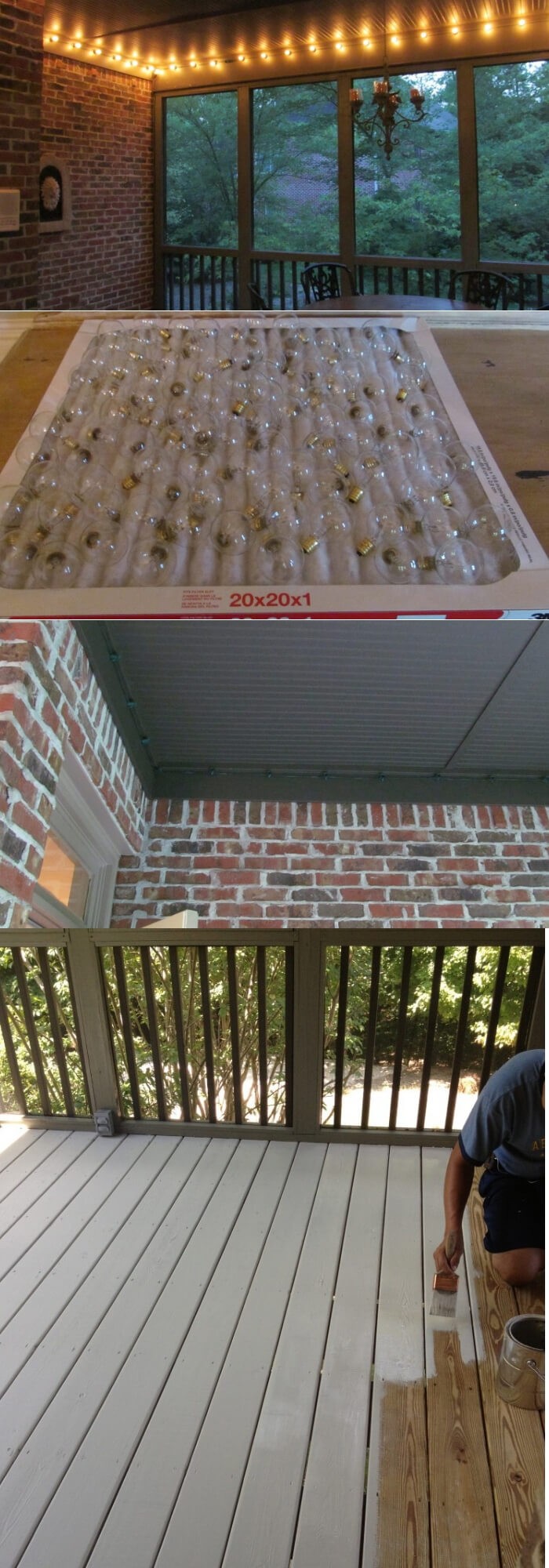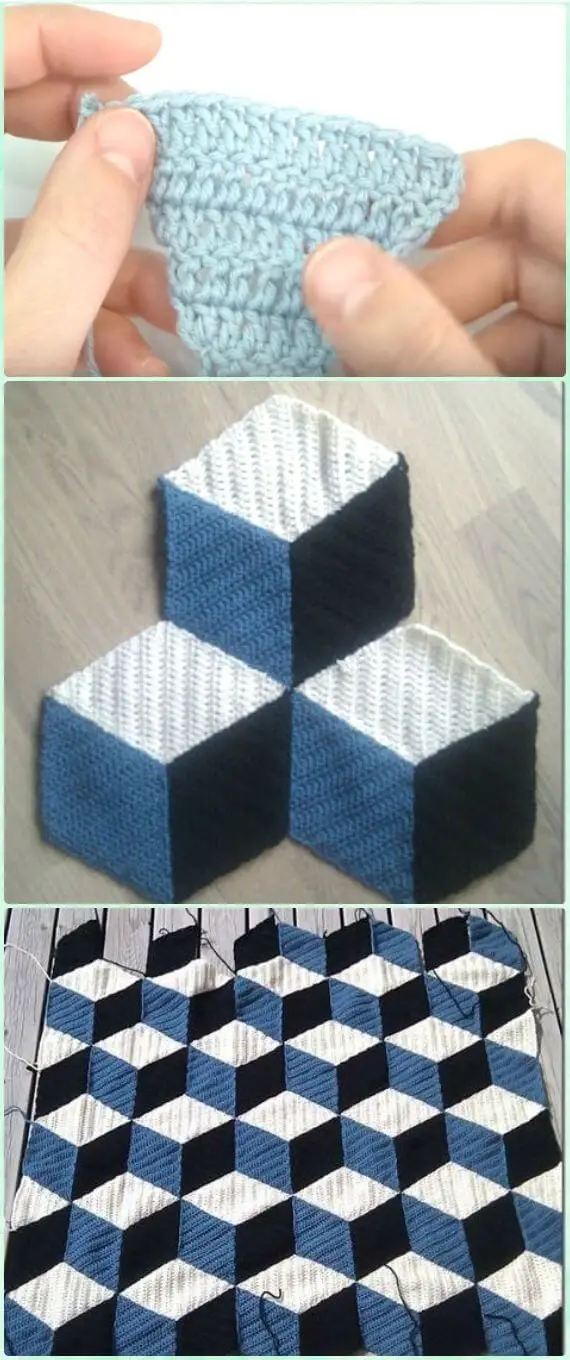24+ Types Of String Succulents: Growing And Plant Care (With Pictures)
If you’re a succulent enthusiast with limited space and time, string succulents are an excellent choice. These charming plants are low-maintenance and come in a variety of shapes, sizes, and colors. In this post, we’ll delve into the different types of string succulents, explore their unique characteristics, and provide tips on how to care for them and create your own stunning garden.
You’ll discover 24 distinct species, from Burro’s Tail to String of Tears, each with its own distinctive features. Whether you’re a seasoned gardener or just starting out, this post will give you the inspiration and guidance you need to bring these beautiful plants into your home.
Types of String Succulents
Burro’s Tail (Sedum morganianum).
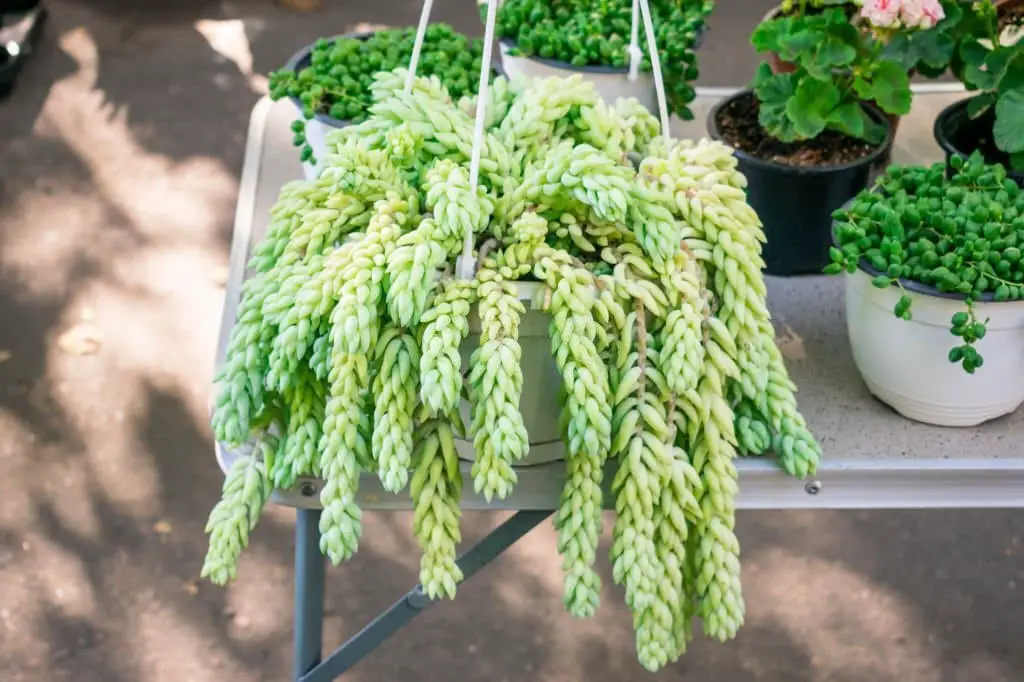
In the mountains of Oaxaca, Mexico, Burro’s Tail grows up to three feet in length, its small, rounded leaves and tiny yellow flowers a testament to its unique charm. As a succulent, this plant has evolved to store water in its leaves, making it an ideal choice for arid, sunny locations where moisture can be scarce.
Despite its low-maintenance nature, Burro’s Tail is surprisingly easy to care for.
It requires minimal watering and can even thrive under neglectful conditions – a characteristic that makes it perfect for busy plant enthusiasts or those new to the world of houseplants. Furthermore, propagation through cuttings is a breeze, allowing you to share this beautiful plant with friends and family.
Calico Kitten (Crassula pellucida).

Hailing from South Africa, the Calico Kitten (Crassula pellucida) boasts charming, tiny leaves with a striking green hue and vibrant red edges. In the spring, delicate white blooms emerge, adding to its irresistible appeal. This adaptable succulent thrives in both indoor and outdoor environments, making it an excellent choice for any succulent enthusiast’s collection. Its remarkable ability to withstand some neglect and become drought-tolerant once established only adds to its charm.
Perfectly suited for beginners, the Calico Kitten is a delightful addition to any space. The plant’s name originates from its uncanny resemblance to a calico kitten, with leaves resembling the feline’s fur and the red margins adding an undeniable ‘cute’ factor.
Green Button Plant (Peperomia rotundifolia).
The Green Button Plant, a member of the Piperaceae family, hails from South America. Its unique feature is the round, fleshy leaves that boast a striking green color with vibrant red veins. This low-maintenance houseplant has gained popularity among those seeking easy-to-care-for plants. Interestingly, it’s also known as the Baby Rubber Plant and shares a common ancestor with the Pepper Plant.
Notably, this plant excels at purifying the air, making it an excellent choice for individuals struggling with allergies or asthma. Propagation is achievable through stem cuttings, and the Green Button Plant thrives in bright, indirect light conditions.
Rat tail cactus (Aporocactus flagelliformis).
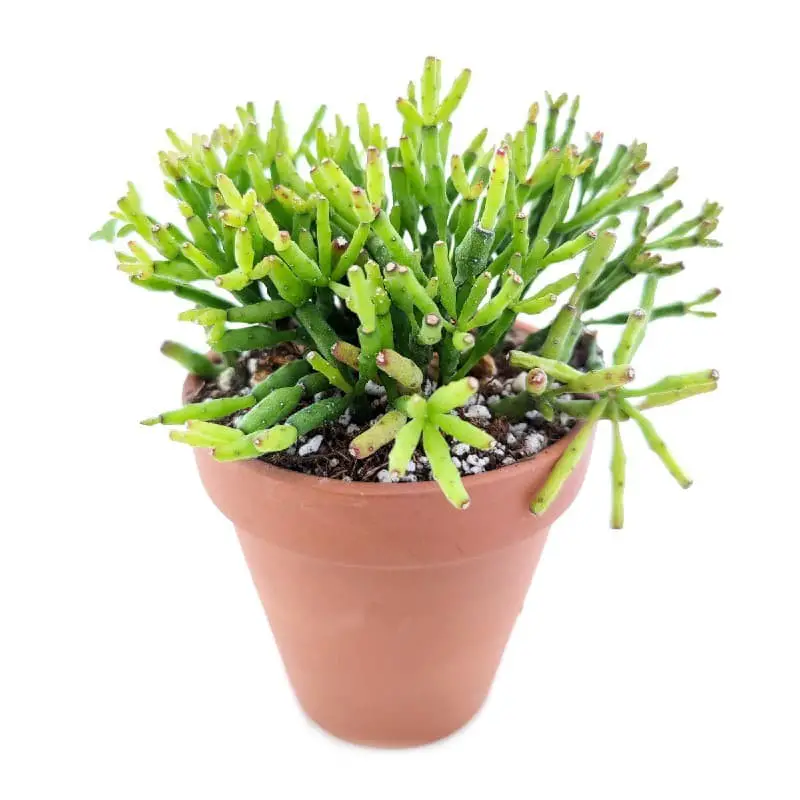
Native to Mexico, this impressive cactus has the ability to grow up to six feet tall, making it a standout feature in any garden or indoor space. Its unique characteristic lies in its long, slender stems that evoke the tail of a rodent, earning it the name ‘rat tail cactus’. As if that wasn’t enough, the plant’s surface is also covered in tiny spines that provide an added layer of protection and texture.
Silver Glory String of Hearts (Ceropegia woodii ‘Silver Glory String of Hearts’).
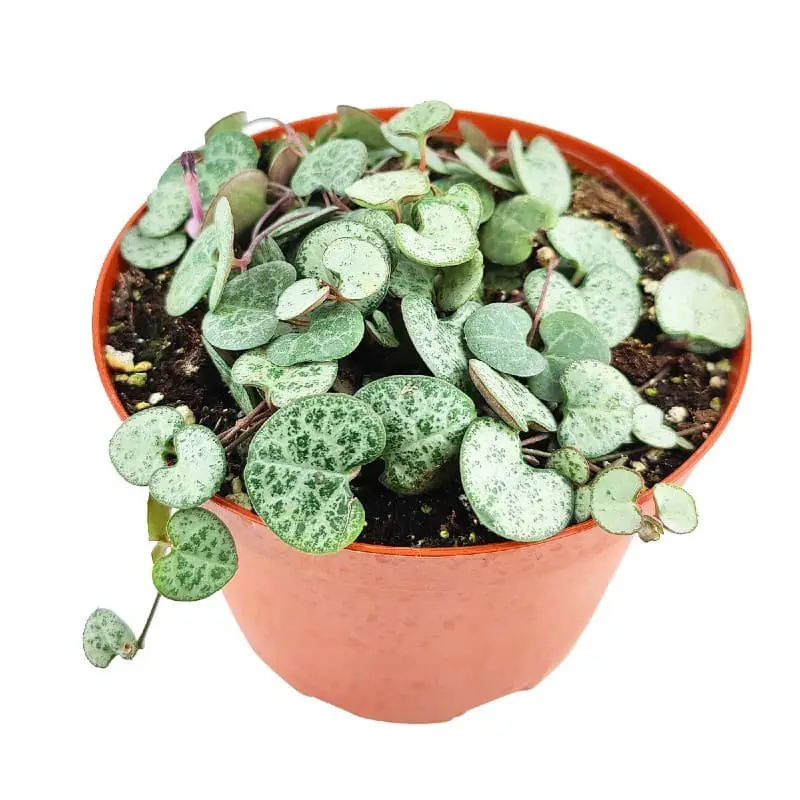
The Silver Glory String of Hearts is a unique hybrid plant that has gained popularity due to its striking appearance and ease of growth. This fast-growing vine can reach lengths of up to 20 feet, making it an excellent choice for trellises or other support systems. The leaves are a beautiful combination of dark green and silver, with heart-shaped profiles and a subtle shimmering effect. In the summer and fall seasons, this plant produces gorgeous white flowers with distinctive purple stripes.
Native to South Africa, Silver Glory String of Hearts thrives in well-drained soil and full sun to partial shade conditions. It is also surprisingly drought-tolerant, making it an excellent option for gardeners who tend to forget to water their plants from time to time. On the other hand, this plant does not appreciate wet feet and will quickly succumb to root rot if its soil becomes too moist.
One of the most exciting aspects of Silver Glory String of Hearts is its versatility when it comes to propagation. It can be grown from seed, stem cuttings, or even root cuttings, providing multiple options for those looking to expand their plant collections. As with any fast-growing vine, however, it’s essential to keep this plant in check to prevent it from becoming invasive and taking over other areas of the garden.
String of Arrows (Ceropegia Woodii ‘String of Arrows’).
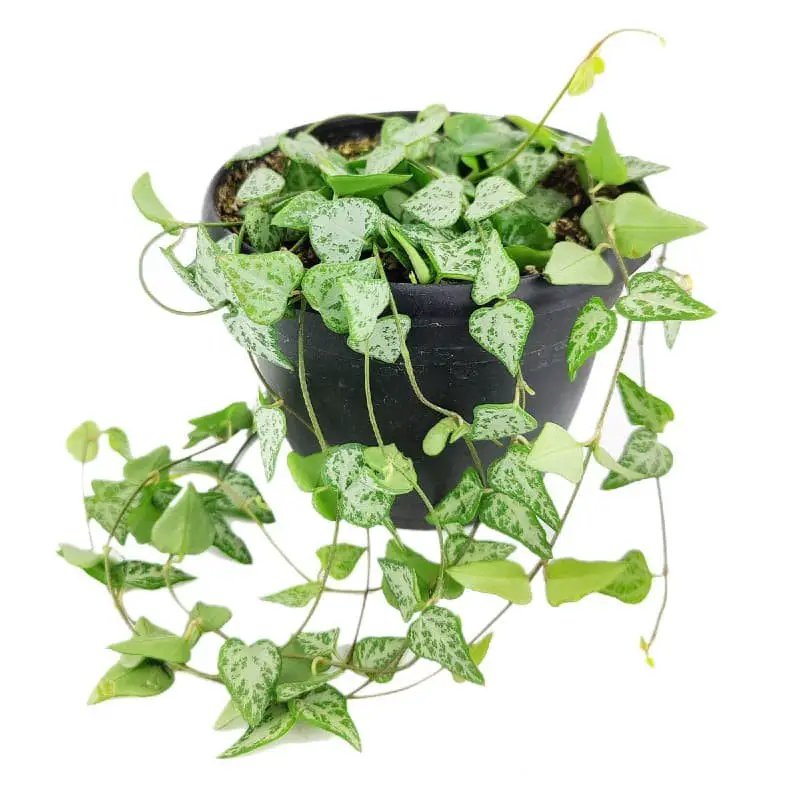
In South Africa, you’ll find the unique String of Arrows succulent thriving in its natural habitat. Its striking feature is the long, slender leaves that resemble a quiver full of arrows, hence its name. This fast-growing plant can stretch up to 12 inches in length, making it an eye-catching addition to any space. As summer rolls around, String of Arrows produces delicate white blooms that add to its charm.
What’s more, this succulent is remarkably drought-tolerant and requires minimal watering to survive. Its low-maintenance nature makes it an ideal choice for those new to succulent care or looking to enhance their collection.
String of Bananas (Senecio radicans).
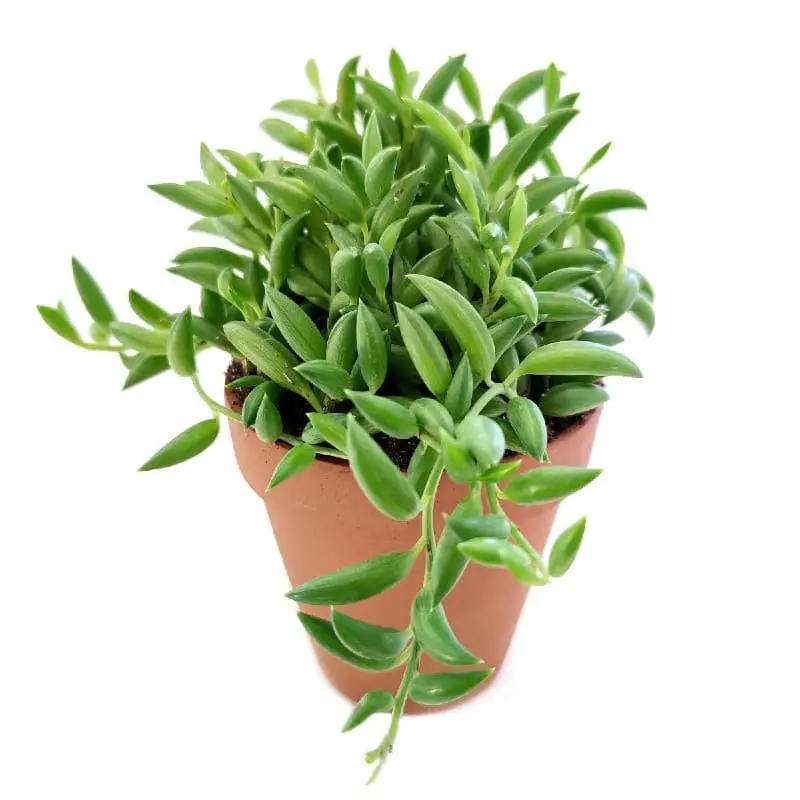
String of Bananas, a succulent native to South Africa, boasts striking features that have captured the hearts of many. Its slender, rosette-patterned leaves showcase a beautiful blend of green and yellow or white stripes, making it a stunning addition to any succulent garden.
As its name suggests, String of Bananas produces small, bright yellow flowers in the spring and summer months.
But what truly sets this plant apart is its low-maintenance nature – it thrives under full sun to partial shade and can tolerate drought, making it perfect for busy botanists or those new to succulent care.
Despite its hardiness, String of Bananas does require some protection from frost and extreme temperatures. Propagation is a breeze, too – simply take stem cuttings or divide the plant to share with friends or expand your own collection.
String of Beads (Senecio herreianus).

Adorn your space with the captivating beauty of a trailing succulent, perfect for adding a touch of greenery to any room. Native to South Africa, this stunning plant can grow up to three feet in length, showcasing its unique charm. With low maintenance requirements, including bi-weekly watering, String of Beads – also affectionately known as ‘String of Pearls’ and ‘Chain of Hearts’ – is an ideal choice for those seeking a carefree yet visually striking addition to their home.
String of Buttons (Crassula perforata).
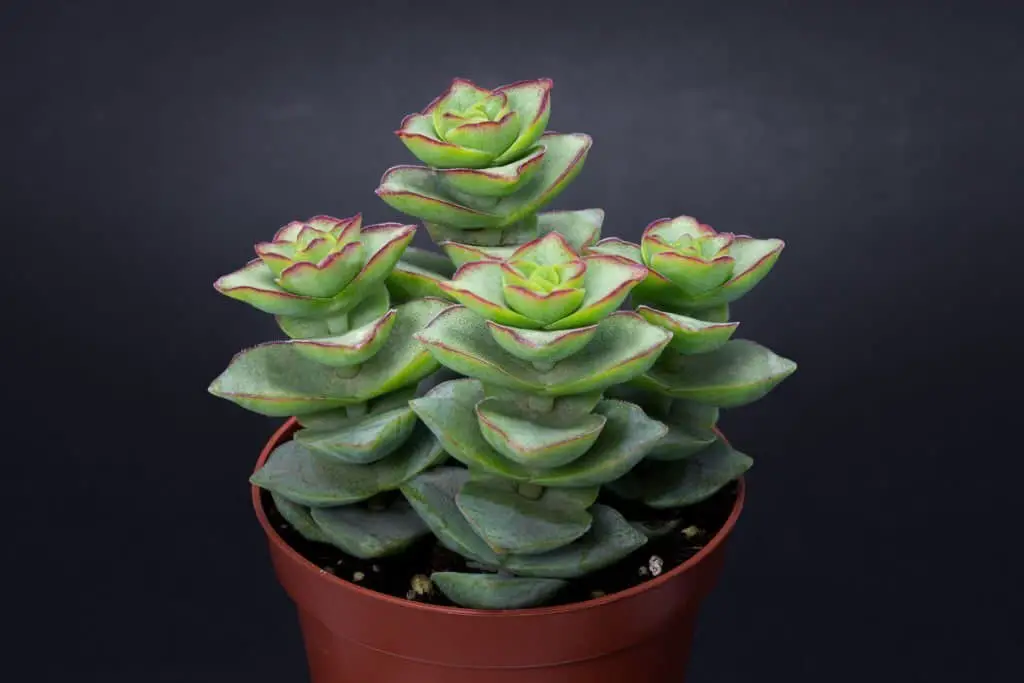
String of Buttons, a succulent with a whimsical flair, hails from South Africa where its leaves form a striking spiral pattern reminiscent of buttons on a string. This charming plant is perfect for those seeking to add a touch of playfulness to their succulent collection. As an added bonus, String of Buttons is relatively low-maintenance and makes an excellent choice for succulent newcomers. It thrives in well-lit, indirectly sunlit environments with soil that drains efficiently.
Watering is simple: just wait until the soil feels dry to the touch and avoid over-watering, which can lead to root rot.
String of Dolphins (Senecio Peregrinus).
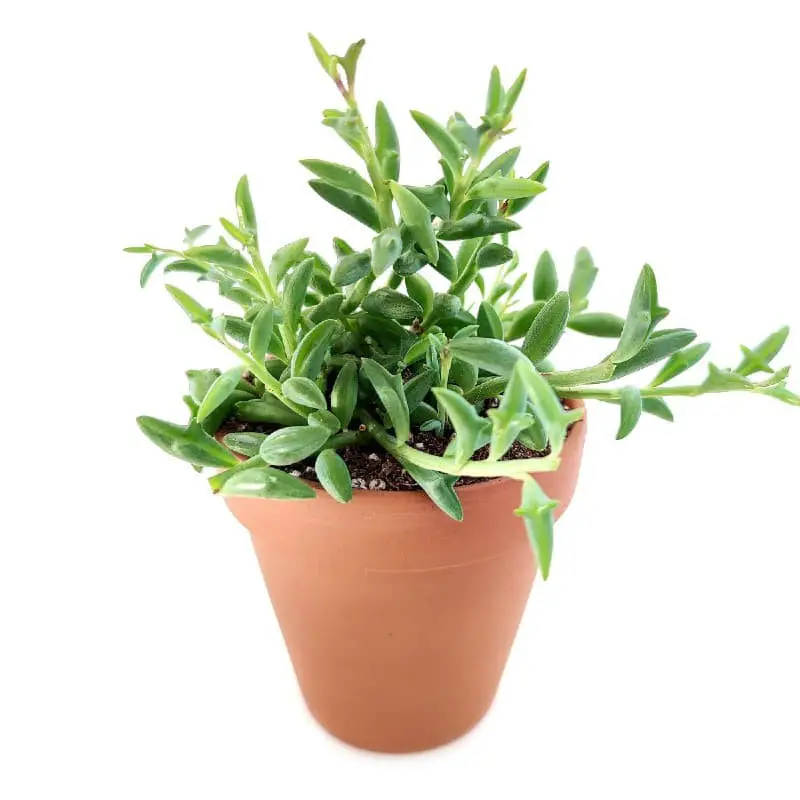
The ‘String of Dolphins’ succulent, scientifically known as Senecio Peregrinus, hails from South Africa and is a member of the daisy family. Its unique feature is the shape of its blue-green leaves, which resemble dolphins. This fast-growing plant can reach lengths of up to 12 feet, making it a striking addition to any indoor space. Due to its sensitivity to frost, it’s ideal for growing in pots indoors where temperatures remain consistent.
While bright, indirect sunlight is preferred, String of Dolphins can also thrive in low-light conditions. To keep your succulent happy and healthy, water only when the soil feels dry to the touch and fertilize monthly during the growing season. Propagation is relatively simple, requiring only stem cuttings taken in the spring or summer.
String of Fishhooks (Senecio radicans).
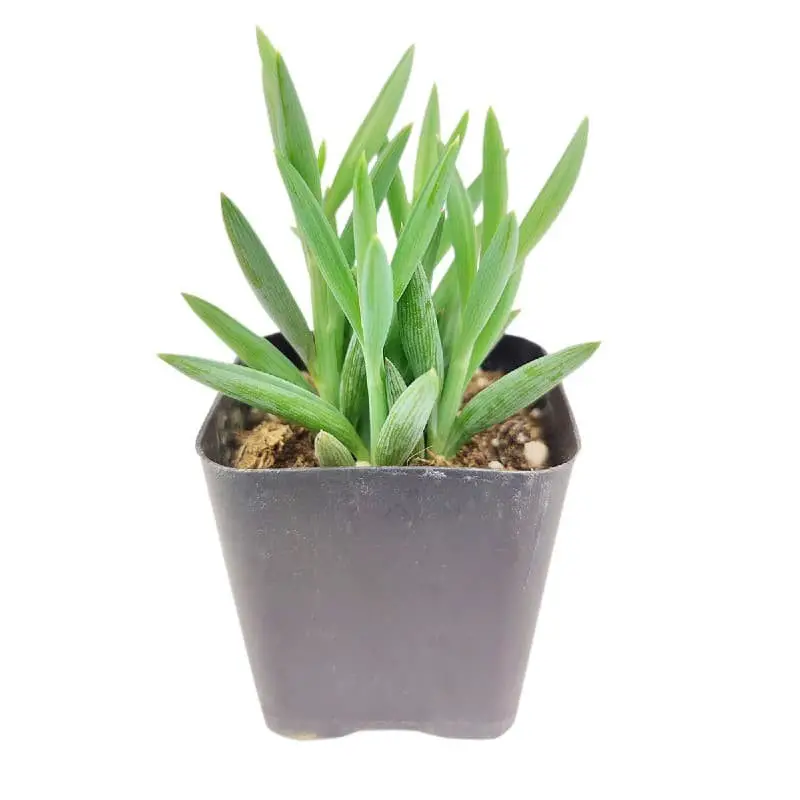
This succulent, native to South Africa, boasts an intriguing appearance characterized by small, rounded leaves resembling fishhooks. Its unique shape has earned it the name ‘String of Fishhooks’, making it a sought-after choice for hanging baskets and other containers. Not only is this plant easy to care for, but it also brings a touch of elegance to any indoor space.
String of Hearts (Ceropegia woodii).
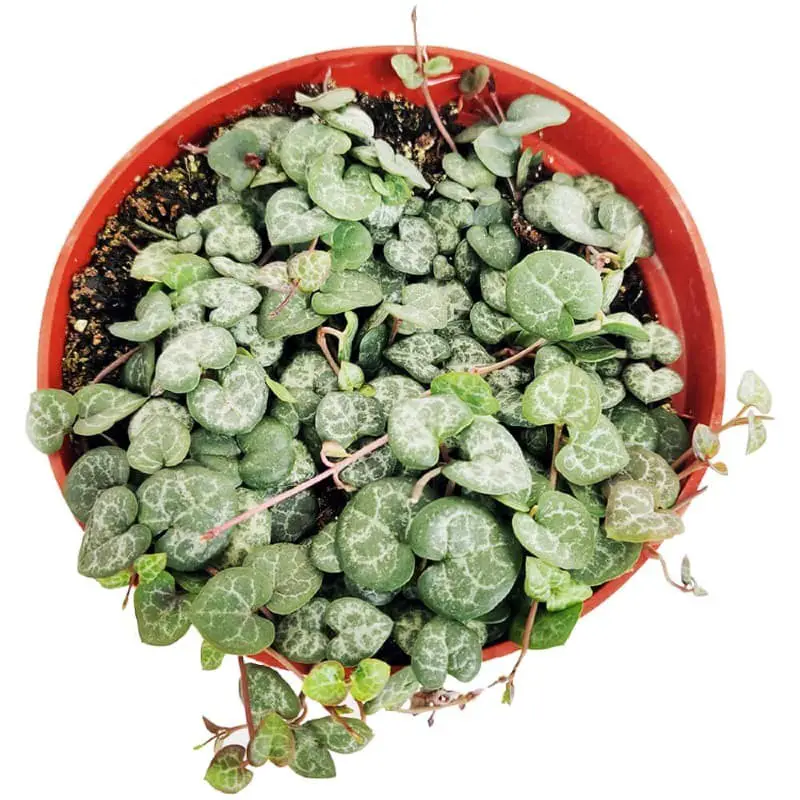
Discover the allure of String of Hearts, a succulent native to South Africa, and learn about its unique characteristics. This fascinating plant belongs to the Apocynaceae family and is closely related to Ceropegia, which boasts an impressive 300 species. The String of Hearts plant stands out with its slender stems adorned with intricate, heart-shaped leaves that display a striking combination of green, white, and purple hues.
As the summer months arrive, this succulent treats us to dainty, white blooms, adding to its charm.
String of Necklace (Crassula marnieriana).
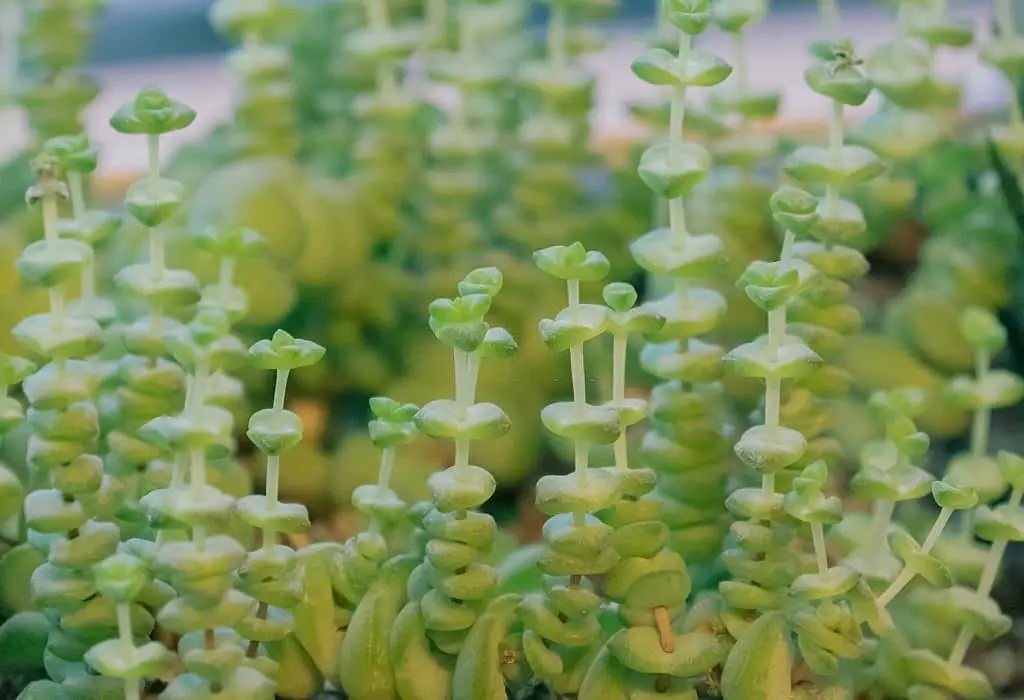
In the heart of South Africa lies the fascinating String of Necklace plant, characterized by its slender, spiral-arranged leaves that resemble a delicate string of pearls. This succulent gem is impressively resilient, capable of thriving in full sun to partial shade and tolerating drought-like conditions. As an added bonus, it grows rapidly, reaching up to 12 inches in length, making it a great choice for beginners looking to add some unique texture to their succulent collection.
With its versatility in propagation via stem cuttings or leaves, String of Necklace is an easy-to-care-for option that can be enjoyed indoors, protected from harsh winter conditions.
String of Needles (Ceropegia Linearis ‘String of Needles’).
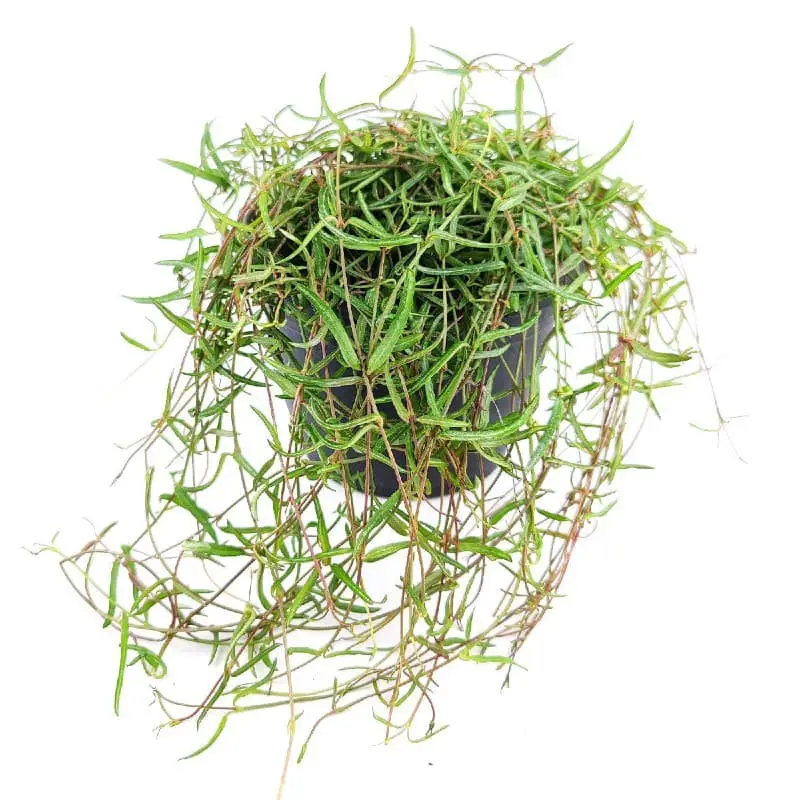
For those seeking a striking yet low-maintenance addition to their space, String of Needles is an excellent option. This trailing succulent boasts vibrant greenery that can thrive in both bright and low-light conditions, making it perfect for busy homeowners or offices. Its ease of care makes it a great choice for anyone looking to add a touch of elegance without the hassle.
String of Nickels (Dischidia nummularia).
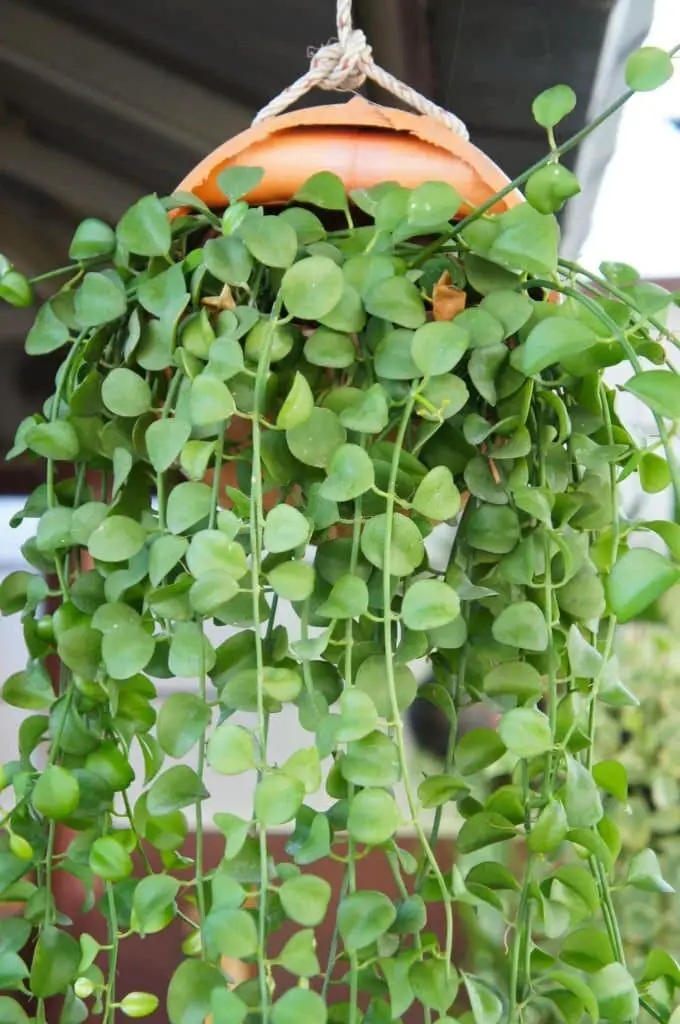
Native to tropical Asia, the stunning String of Nickels succulent boasts rounded leaves resembling coins, earning it its unique moniker. This versatile plant thrives in both indoor and outdoor settings, making it an excellent addition to any space. Its low-maintenance nature means that even the most novice gardeners can enjoy its benefits. With proper care, this charming plant will flourish, producing delicate white blooms that add a touch of elegance to any environment.
Whether you’re a seasoned green thumb or just starting out, String of Nickels is an excellent choice for those seeking a statement piece that requires minimal upkeep.
String of Pearls (Curio rowleyanus or Senecio rowleyanus)
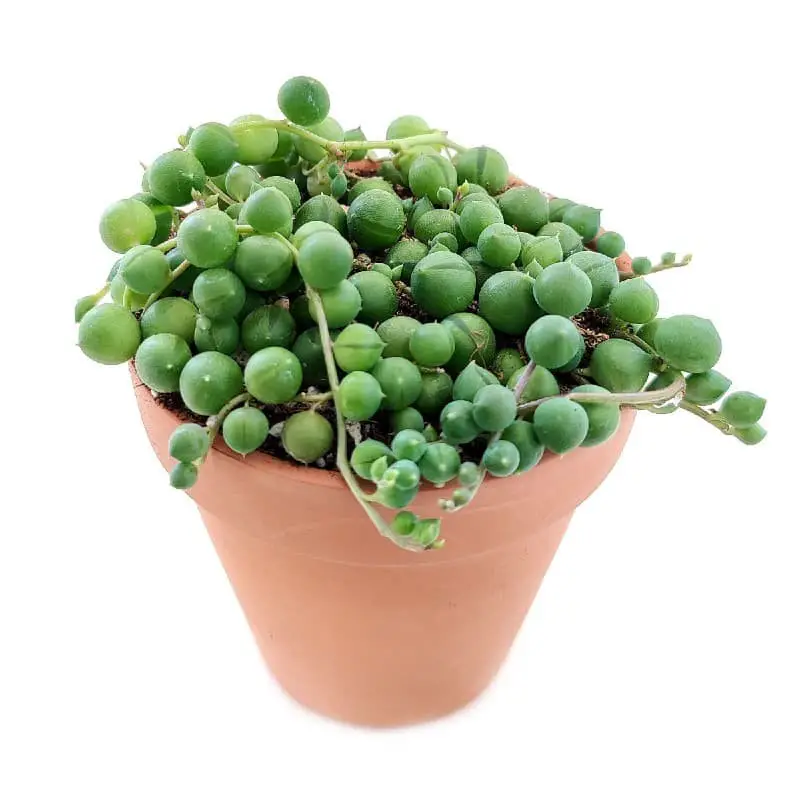
In the world of succulents, there’s a standout species that’s as unique as its name – String of Pearls. Native to South Africa, this striking plant earns its moniker from its peculiar leaves, shaped like pears and aptly nicknamed String of Beads, Necklace Vine, or simply Bead Plant. What sets it apart is not just its appearance but also its low-maintenance requirements, making it a favorite among busy plant enthusiasts.
This adaptable succulent thrives in conditions ranging from full sun to partial shade, and its ability to withstand droughts means you can forget to water it from time to time – talk about stress-free! Its propagation process is straightforward too, involving simple stem cuttings that’ll soon give rise to a new generation of these captivating plants.
String of Pickles (Othonna capensis).
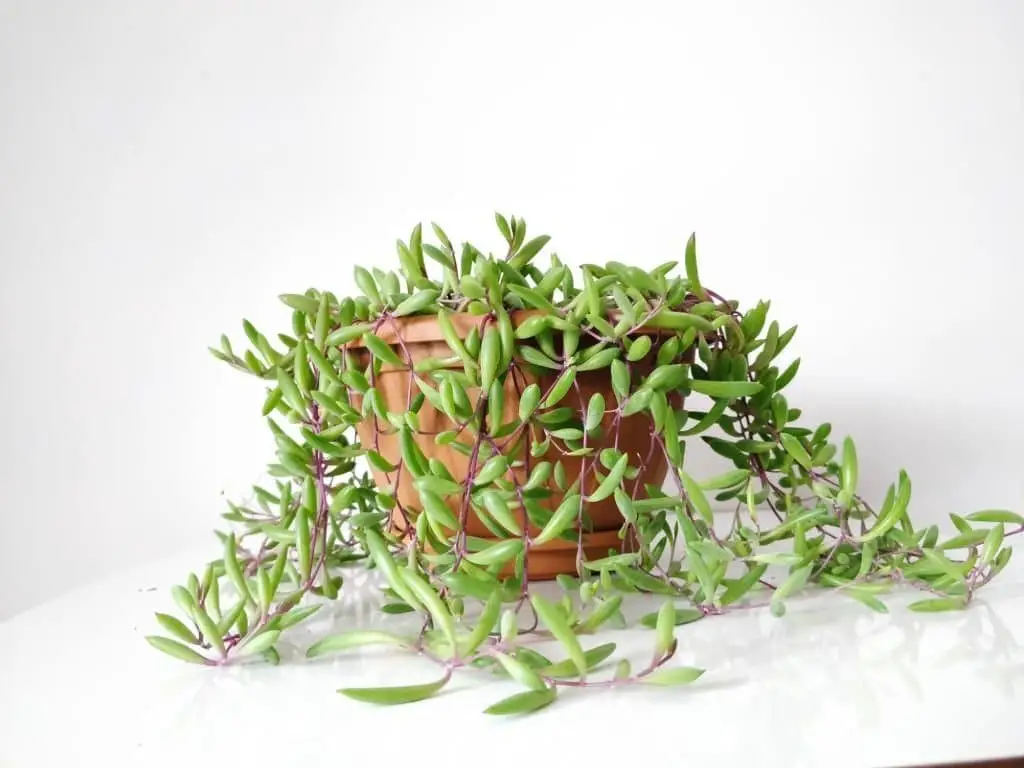
String of Pickles, a succulent native to South Africa, is characterized by its unique, string-like stems adorned with small, rounded leaves. This drought-tolerant plant thrives in bright, indirect light, making it an ideal choice for indoor spaces. However, it’s not frost-hardy and should be brought indoors during the cold winter months to prevent damage. Watering requirements are minimal for this succulent, as it’s designed to survive with limited moisture.
Allow the soil to dry completely between waterings, and adjust your schedule accordingly. During its active growth period, String of Pickles requires bi-weekly watering, while during the winter months, a monthly watering is sufficient.
String of Spades (Ceropegia woodii String of Spades).
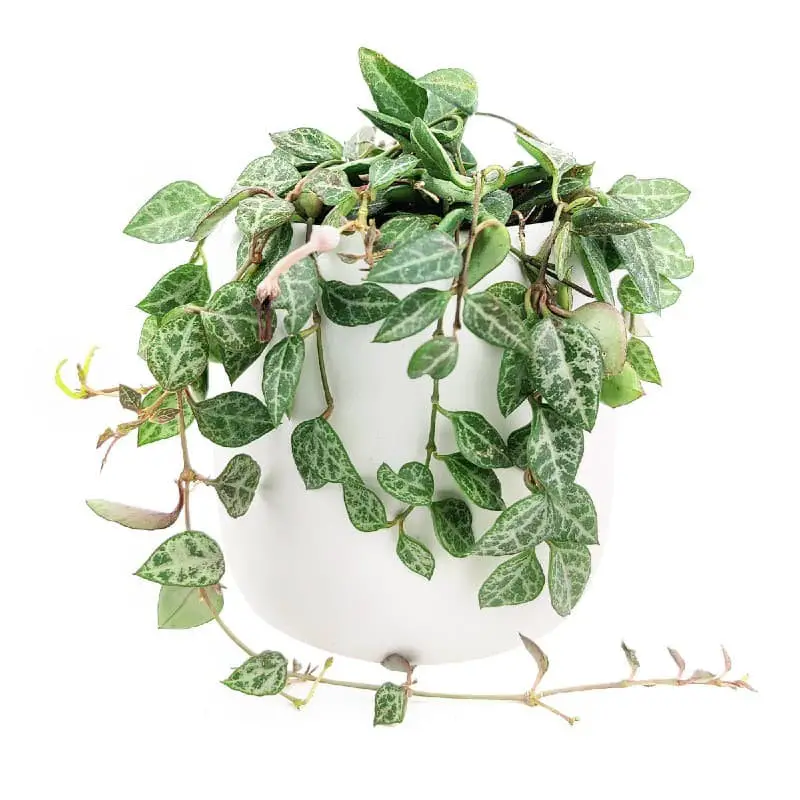
Incorporating the unique charm of South Africa, String of Spades is a succulent that thrives in warm climates. Its striking foliage features thick, fleshy leaves with green undertones and white stripes running vertically down the center, providing an attractive display even when not in bloom. When it does flower, delicate white blooms are adorned with purple streaks, adding a touch of whimsy to the garden during summer and fall.
This low-maintenance plant excels in containers or in-ground settings, tolerating partial shade while still requiring at least some direct sunlight to photosynthesize effectively. Its exceptional drought tolerance means it can survive with minimal watering, although regular fertilization every few months during the growing season will promote healthy growth.
String of Tacos (Peperomia axillaris).
Enchanting String of Tacos, a flowering succulent with leaves resembling miniature tacos, thrives in hanging baskets or as a lush ground cover. This charming, trailing plant hails from Brazil and excels in humid climates, where it showcases delicate white blooms.
String of Tears (Senecio herreianus or Curio herreanus).
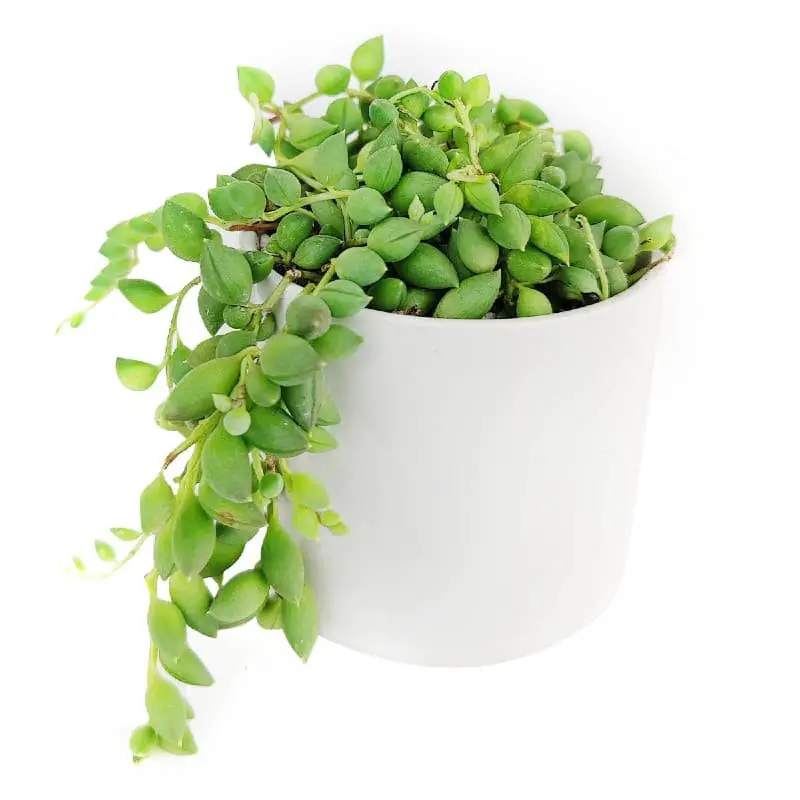
In the succulent world, there’s one species that stands out for its unique appearance: String of Tears. Native to South Africa, this remarkable plant boasts leaves shaped like tears – a feature that gives it its name. When fully grown, String of Tears can reach an impressive 12 inches (30 cm) in height, making it a striking addition to any indoor or outdoor space.
As a member of the Asteraceae family, String of Tears is closely related to another popular succulent species: Senecio rowleyanus, also known as String of Pearls. Its fast-growing nature and ease of propagation via stem cuttings make it an attractive option for those looking to add some greenery to their space.
But what really sets String of Tears apart is its low-maintenance requirements.
It’s incredibly drought-tolerant and can thrive in conditions with minimal watering – a bonus for busy plant enthusiasts or those who tend to forget to water their plants from time to time.
Whether you’re looking for a statement piece or a low-fuss addition to your garden, String of Tears is definitely worth considering. And when it comes to growing conditions, this succulent is happy to adapt to either full sun or partial shade – giving you the flexibility to place it wherever you like.
String of Turtles (Peperomia prostrate).
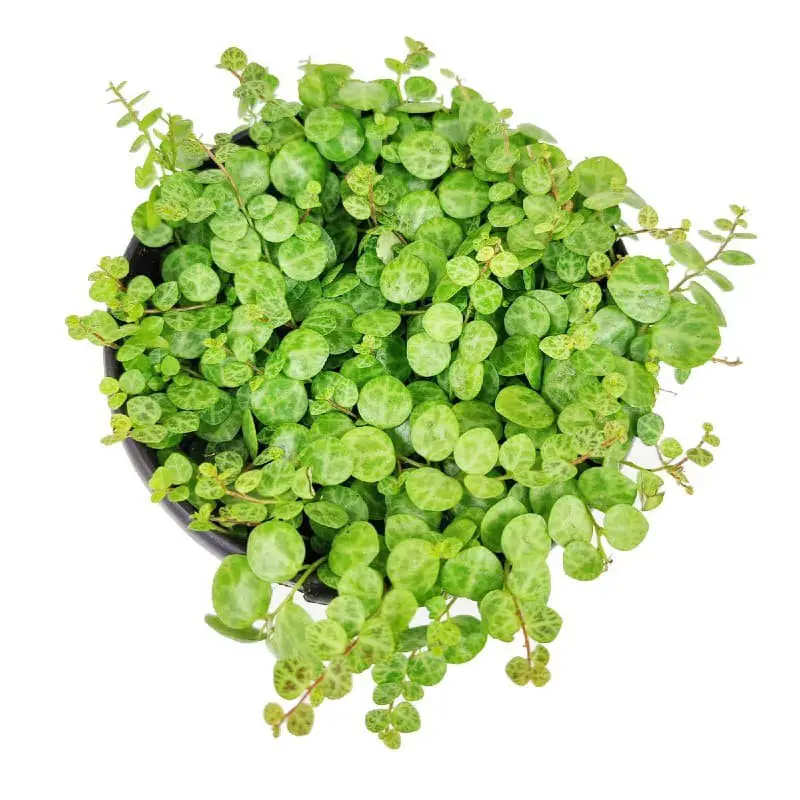
For the perfect blend of style and simplicity, look no further than the enchanting String of Turtles plant. Native to Brazil, this charming species has earned its name from the tiny, rounded leaves that evoke the shell of a turtle. With its versatility in growth habits, this trailing beauty can thrive in hanging baskets or as a lush groundcover, reaching lengths of up to two feet.
Moreover, it displays remarkable resilience, tolerating drought and adapting to a wide range of lighting conditions, making it an excellent choice for novice gardeners or those facing less-than-ideal growing conditions.
Variegated String of Hearts (Ceropegia Woodii ‘String of Hearts’).
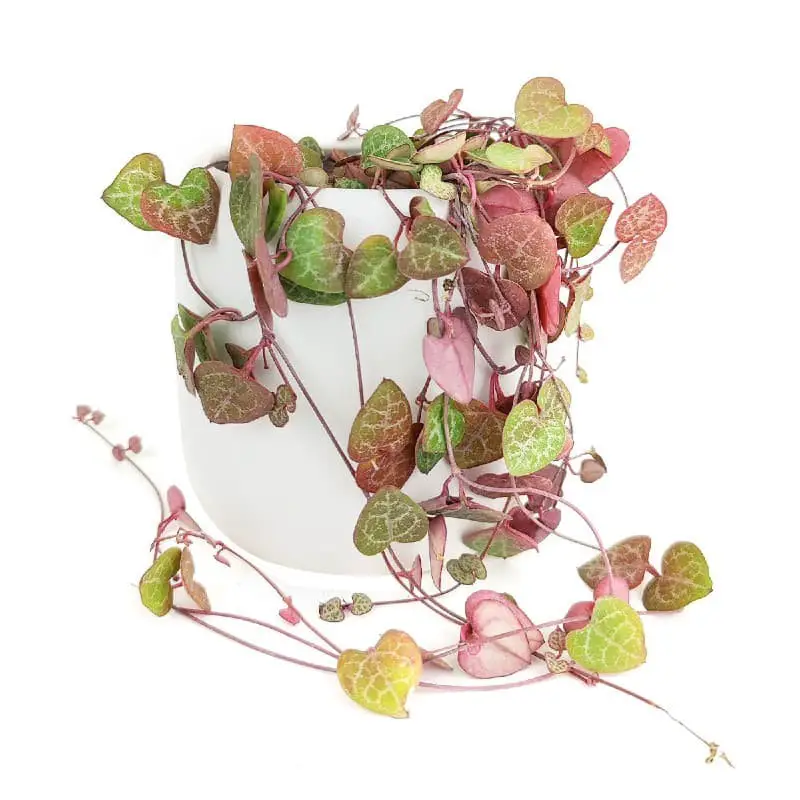
Enhance your indoor space with the charming Variegated String of Hearts succulent! This stunning trailing plant boasts intricately patterned heart-shaped leaves that showcase a captivating blend of green, white, and pink hues. As an added bonus, it also produces dainty white blooms, making it a delightful addition to any room.
Variegated String of Pearls (Senecio Rowleyanus Variegata).
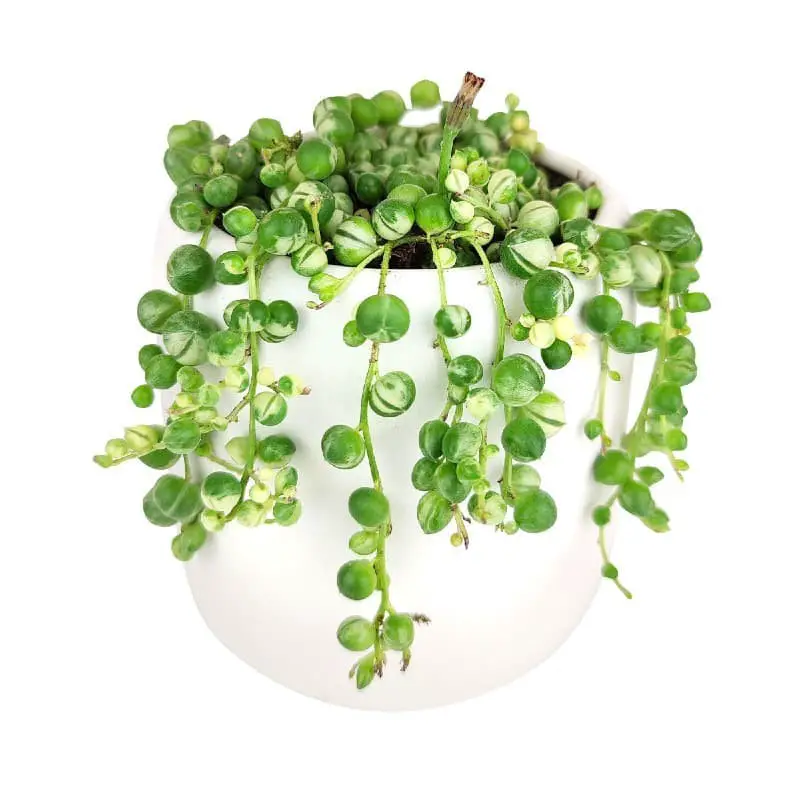
Discover the charms of Variegated String of Pearls, a succulent native to South Africa. Its striking leaves boast an oval shape and a pearlescent sheen adorned with white variegation. As if that weren’t enough, this plant also produces small, bright yellow flowers. What’s more, Variegated String of Pearls is a low-maintenance delight that thrives in neglect – making it the perfect choice for both novice gardeners and succulent enthusiasts.
Its drought-tolerant nature means it can survive with minimal watering, while its pest-resistant properties ensure your plant will remain healthy and thriving.
Watch Chain Plant (Crassula muscosa).
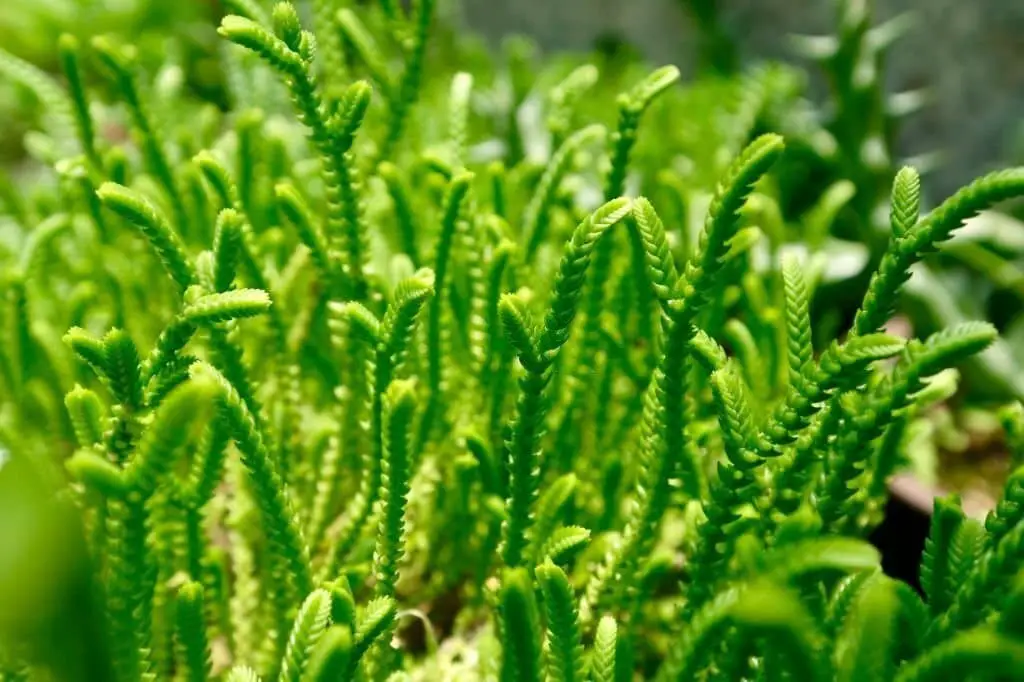
Watch Chain Plant (Crassula muscosa) is a compact, evergreen succulent that thrives in diverse environments. Its opposite, ovate-shaped leaves are fleshy and green with vibrant red margins, providing an attractive foliage display. The plant produces clusters of white or pale pink flowers on terminal stems, adding to its visual appeal. Native to South Africa and Lesotho, Watch Chain Plant is a versatile addition to any garden.
This succulent is remarkably adaptable, tolerating a broad range of conditions, including full sun, partial shade, and well-drained soil. Its drought-tolerant nature means it requires minimal watering once established, making it an excellent choice for rock gardens, containers, or as a groundcover. Xeriscaping enthusiasts will also appreciate its low-maintenance profile.
One of the plant’s greatest strengths is its resistance to pests and diseases.
While mealybugs and scale may still pose a threat if conditions are too wet, Watch Chain Plant remains relatively unaffected by common garden afflictions. Propagation is possible through seed, stem cuttings, or leaf cuttings, making it easy for enthusiasts to share this beautiful succulent with others.
How to plant string succulents.
String succulents are an ideal choice for indoor gardens, offering low-maintenance beauty to any home. To cultivate these charming plants, begin by selecting a spot that receives ample sunlight. Once you’ve identified the perfect location, prepare the soil by incorporating organic matter such as compost or manure. Next, carefully dig a hole that is roughly twice the size of the plant’s root ball and gently place the succulent in its new home.
Finally, fill the hole with soil and thoroughly water the surrounding area to ensure proper settling.
How to care string succulents.
String succulents are a unique type of succulent that exhibits a linear growth pattern, making them an attractive addition to any home. With their low-maintenance requirements, they’re perfect for busy individuals or those new to plant parenthood. To keep your string succulents thriving, follow these care guidelines:
Watering is key: allow the soil to dry out slightly between waterings, which can be as often as once a week, depending on the humidity and light exposure.
Lighting is crucial: string succulents prefer bright, indirect sunlight to photosynthesize effectively. Be mindful of direct sunlight, which can cause scorching.
Nutrition is essential: during the growing season, fertilize your string succulents every four to six weeks to promote healthy growth and development.
Propagation is a breeze: simply cut a section of the plant, allowing it to form a callus over several days before potting it in well-draining soil.
With proper care, your new string succulent will quickly establish itself.
Conclusion
By now, you should have a solid grasp on the diverse array of string succulent species. It is my hope that this in-depth exploration has not only deepened your understanding of these fascinating plants but also sparked your enthusiasm to bring one (or several!) into your home. With proper care and attention, string succulents can thrive as stunning, easy-to-maintain houseplants, effortlessly elevating any space with their lush greenery.
Related Posts
To thrive, succulent enthusiasts require guidance on the unique needs of various species. In this realm, three plants stand out for their distinct characteristics: Peperomia Graveolens ‘Ruby Glow’, Rhipsalis cereuscula (Coral Cactus), and Gymnocalycium Mihanovichii (Moon Cactus). While they may share some care requirements with other succulent varieties, each presents its own set of challenges and opportunities for growth.
By exploring the specific needs of these plants, even the most novice horticulturist can unlock the secrets to a lush and vibrant indoor garden.


